Any shoes, even the highest quality and most expensive, wears out over time, and often tears. Most often, the sole is disconnected, it can also burst or break off, in which case you have to carry a couple for repair. But all the work can be done with your own hands if you buy high-quality adhesive for shoes and correctly prepare the base.
- Shoe glue requirements
- Types of glue for shoes: the pros and cons of compositions
- Nairite glue
- Polyurethane adhesive
- Rubber-vinyl chloride compound
- PVC glue
- Universal adhesive
- Combined Adhesive
- What adhesives are not suitable for shoe repair
- Rating of quality adhesives for shoes
- "Contact"
- Desmokol
- "Moment Droplet" shoe
- Super Moment
- "Second"
- Eva
- "The moment of the Marathon"
- Nairit 1 (88 P1)
- UHU Schuh & Leder
- Kenda Farben SAR 306
- Glue the sole at home
- How to glue the sole on sneakers
- How to seal a hole
- How to tape a sock of a sneaker
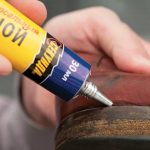
Shoe glue requirements
Many troubles with shoes can be eliminated at home. Up to 80% of pairs are now produced using special adhesives, and shoe glue is almost always used instead of threads and studs for repair. This is due to the high quality of modern adhesives, which have an excellent level of adhesion to different materials and can easily withstand severe loads.
Choosing glue for shoe repair is necessary depending on the specific task. For example, if it is necessary to glue insoles, ordinary shoe glue is used. For the sole, a reinforced composition is bought, if it bursts, sealing is carried out with special means, then gluing. It is best to buy professional brand-name adhesive. In the absence of experience in such acquisitions, you need to make sure that the tool has the following properties:
- reliability, long service life;
- water resistance;
- frost resistance;
- high degree of adhesion;
- lack of rigidity, elasticity;
- no harm to leather shoes or products made of other materials.
Most good adhesives are suitable for leather, leatherette, eco leather, as well as rubber, polyurethane, synthetics, felt, fabric. Nevertheless, some compositions for polyurethane soles are not suitable, they roll off of them, what you need to pay attention to when buying. Usually, it is recommended to purchase compositions based on artificial rubber for summer shoes, and adhesives with higher frost resistance for winter shoes. For repairing for a short time, you can take an inexpensive tool, for a long wear it is better to spend money on better glue.
to contents ↑Types of glue for shoes: the pros and cons of compositions
Choosing shoe glue is quite difficult, because there are many types of such products on sale. Which is better in each case, will help determine the classification of adhesives for the purpose:
- The main fastening - they can glue the sole, attach the heel. Such solutions always have high strength, the most durable.
- Auxiliary fasteners - are intended to enhance the effect of the use of other types of repairs. Usually applied parallel to threads, staples, cloves. They have a lower degree of adhesion.
- Secondary Bonding - Used for labeling, lining.They are absolutely not suitable for repairing soles, because they do not have the proper strength.
Also, all adhesive compositions for shoes can be subdivided according to the type of the main component or several components into polychloroprene, nairite, epoxy, latex, etc. The most popular compositions are described below.
to contents ↑Nairite glue
This one-component product is based on chloroprene rubber (nairite or neoprene), solvents, iron salts, polymers. In appearance, it is a translucent gel of light yellow color, characterized by excellent adhesive abilities. With the Nairit composition, you can glue the cracked rubber sole, securely attach the insoles, install the zipper, it is for these purposes that it is used by professional shoemakers in workshops. The materials for which the adhesive is suitable are:
- leather;
- artificial leather;
- nubuck;
- shoe fabrics.
Nairite glue It is waterproof, it can be used as a sealant for the treatment of seams on shoes. Maximum strength is reached after 3 hours. Nairit has high heat resistance - up to +75 degrees, it remains ductile even in the cold, does not collapse from temperature extremes, after complete drying it is harmless to humans. Examples of nairite compounds include shoe glues "Octopus", "Rapid".
to contents ↑Polyurethane adhesive
Such compositions are characterized by increased strength, they tightly fix the products having a porous structure, while the seam remains flexible. On dense materials, polyurethane adhesive is undesirable, because after drying it increases in volume. Usually rubber or polyurethane soles are glued with similar means.
Adhesives of this type can be used manually or using a machine for applying compositions. They are easy to use, but it is very difficult to remove from the surface after drying. Popular adhesives based on polyurethane - "Dismacol", "Anles", Kleyberg.
to contents ↑Rubber-vinyl chloride compound
Typically, such tools are sold in large packages, and they are used only for auxiliary work in the repair of shoes, since the reliability of fixation does not differ. Synthetic rubber compounds will help:
- fasten the braid;
- stick insoles;
- glue together leather insoles and a textile base;
- seal internal seams.
They cannot withstand direct contact with water, because they cannot boast of high water resistance. They will not keep the torn sole, heel, and besides, they will not tolerate lower temperatures. As an additional method of attaching rubber-vinyl chloride compounds, they can be used for flashing the rubber soles of summer shoes.
to contents ↑PVC glue
In the manufacture of adhesives, various polymers are used, as well as solvents acetone, benzene, tetrahydrofuran. To increase the resistance to environmental factors, vinyl resins are added to the agents. These highly elastic resin-based compounds are excellent for gluing leather elements of shoes, textile parts, for joining braid. Usually in shoe repair, they are used to seal the nose of sneakers, boots, and rubber boots. Examples of adhesives are Rogneda, PV-16, PK-10.
to contents ↑Universal adhesive
Most often called universal superglue, which is sold in any hardware store. Small tubes (from 1-2 ml) are inexpensive, easy to use. It cures quickly, has a high degree of adhesion provided by the cyanoacrylate included in the composition. But superglue can only be used for minor or temporary shoe repairs. Despite the strength, the seam is not elastic, so it quickly breaks. Examples of adhesives: Moment, Alteco, AVS Crystal.
to contents ↑Combined Adhesive
The so-called combined adhesives, which contain several adhesive components, such as nairite, rubber, polymers, and resins, have excellent performance characteristics.Adhesives of this type are used to connect the soles to the upper of a shoe made of leather, synthetics. Also, the combined compositions are well suited for sealing the bottom, toe, smearing textile and leather layers of insoles.
to contents ↑What adhesives are not suitable for shoe repair
Often, home-made “masters” when spoiling shoes acquire the first glue that comes across. Unfortunately, when using the wrong product, the gluing effect will be short-term, the adhesive joint will quickly collapse. For example, applying PVA glue, even the most expensive one, will lead to the separation of the sole or leather elements at the first exposure to frost, water.
Superglues should also not be used for long-term repairs. Universal compounds are more suitable for hard joints, so after a couple of weeks wearing shoes will begin to crumble. Some adhesives spoil the materials of shoes, since the composition contains solvents and chemical compounds that are unsuitable for leather and textile. The scope of application of epoxy adhesives is also limited, they are used exclusively for repairing used heels, filling external defects (cracks, potholes).
to contents ↑Rating of quality adhesives for shoes
On sale there are various adhesives that differ in composition and price - domestic, imported. After the purchase, it is important to carefully read the instructions, because for unequal means, the application procedure, fixation and drying times vary.
"Contact"
The tool was developed by Rosel more than 15 years ago and gradually gained a leading position in the market. Compared to the popular “Moment”, “Contact” costs less with excellent quality. This glue is optimal for leather, rubber, fills gaps and cracks, well seals shoes. It should not be used for repairing winter shoes: resistance to freezing temperatures is low.
Desmokol
Glue "Desmokol" made on the basis of polyurethane. It is sold only in large packages, as it is considered professional. The composition includes polyurethane resins, modifiers, organic solvents. Here are the glue specifications:
- creating a transparent seam;
- water resistance, heat resistance, frost resistance;
- durability and strength of the seam;
- affordability;
- possibility of application as a sealant.
Most often, Desmokol is used in repair shops and shoe factories, but if desired, it is suitable for home use. Shoes are guaranteed to last a long time, the gluing place will not burst in the cold, will not be damaged by water. After application, Desmokol increases in volume, therefore it is ideal for porous substrates - rubber, PU soles, when connecting the soles with leather parts, when gluing insoles.
to contents ↑"Moment Droplet" shoe
Glue in a red package “Droplet” at a low price (about 40 rubles) perfectly holds together the details of footwear made of leatherette and leather, plastic and cork, textiles, rubber. It connects dissimilar materials, after hardening forms an elastic, flexible seam that does not collapse from the action of frost, moisture. Shoes glued with a drop will last a long time, especially with proper preparation (pre-cleaning, drying). Cons of the product are unpleasant odor, opacity.
to contents ↑Super Moment
The “moment” in the black tube belongs to the category of superglue, therefore it is used in shoe repair to a limited extent. The glue is suitable for emergency bonding of any products made of leather, plastic, as well as ceramics, metal, glass, and other materials. Despite the manufacturer’s operating temperature range (-40 ... + 70 degrees) and high moisture resistance, the adhesive joint can quickly collapse due to low elasticity.
to contents ↑"Second"
This polyurethane adhesive is ideal for repairing shoes and other products made of leather, rubber, textile, polyurethane, also suitable for wood, plastic, metal, therefore it can be considered universal. It is resistant to the influence of moderately aggressive chemical compounds, salts, weak acids. Advantages of the product:
- ease of application thanks to a thin nose;
- transparency, suitability even for model shoes;
- economical consumption, low price.
to contents ↑Unfortunately, the glue quickly deteriorates, dries up after opening the factory packaging, therefore it is considered “one-time”. This drawback is smoothed out by the presence of small tubes in stores.
Eva
Glue "Eva" exists on the market for many years, is sold everywhere, is made in Thailand. It is designed to seal tears, cuts on shoes, eliminate holes and other defects. The glue is characterized by resistance to moisture, the absence of harmful fumes. The glue seam retains all its properties in case of temperature changes, freezing, therefore Eva is suitable for repairing winter shoes. Due to transparency, after applying the adhesive there will be no traces on the material. It is convenient to apply the product, it has a special dispenser. The price is about 100 rubles.
to contents ↑"The moment of the Marathon"
Henkel glue Moment Marathon is specially designed for repair and restoration of shoes. It is economically consumed, after the first use with tightly closed packaging does not deteriorate, quickly seals any damage. The resulting seam is very durable, lasts a long time, does not collapse from water, since this composition is super moisture resistant. The consistency of the glue is quite thick, it does not flow on the surface of the product, which also allows the possibility of spot application. Other advantages:
- ease of dosage control;
- suitability for all shoe materials - felt, leather, leatherette, suede, nubuck, textile, cork, rubber;
- the possibility of repairing other leather products;
- fast setting with minimum fixation time;
- gel texture, imperceptibility on products.
The disadvantage is the impossibility of using the “Moment” on objects made of polyethylene, polypropylene, PVC, although for shoe repair it is almost irrelevant. Due to the pungent odor, work with glue is necessary in well-ventilated areas.
to contents ↑Nairit 1 (88 P1)
This tool is respected by professionals, it is considered the most popular in shoe repair. Glue "Nairit" provides high quality gluing, while it is safe, does not contain substances harmful to health. After applying the composition and drying, a strong, highly elastic adhesive joint is formed. Moreover, “Nairit” can even process a large area of the product, it remains viable for a long time.
Nairit 1 is suitable for any material used in the shoe industry. With equal efficiency it seals the external and internal parts of the products, attaches the torn sole. Glue can be applied in two ways - cold and hot, the difference will be in the time of the start of operation (24 and 4 hours, respectively). With amateur use of glue, there may be some difficulties with the application due to the density, but it can be quite diluted with acetone.
to contents ↑UHU Schuh & Leder
This German glue is widely used among professionals and beginners. It is ideal for joining soft materials with hard ones: the seam will be elastic, which compensates for the tension of dissimilar surfaces. The properties of the glue are as follows:
- resistance to moisture;
- resistance to the short influence of alcohols, alkalis, weak acids;
- lack of drying out over time;
- the ability to withstand temperatures of -30 ... + 100 degrees.
The tool can be applied by various methods - contact, with thermal activation, with the addition of a solvent. Stains of the solution are easily rubbed with butanol, ethyl acetate. The downside is only the high price - about 300 rubles per tube.
to contents ↑Kenda Farben SAR 306
The product has a wide scope - suitable not only for natural and synthetic leather, but also for textiles, metal, glass, plastic, wood, rubber. Also, it does not harm polyurethane products, soles from TEP, PVC, because it is itself made on the basis of polyurethane. The main purpose of the adhesive is to use leather goods in the production, as well as in the shoe industry and repair.
The solution has the following properties:
- resistance to heat;
- quick initial setting;
- high strength of the adhesive joint;
- moisture resistance;
- lack of an unpleasant smell.
to contents ↑Products glued with this tool should not be used earlier than after 48 hours - so much time is needed to achieve maximum strength with a seam. Then it will turn out strong, but elastic. The price of Kenda Farben SAR 306 is only 400 rubles per can of 1 kg.
Glue the sole at home
To repair shoes that have torn off the sole, you need to purchase glue with a maximum degree of adhesion. Instructions for the work:
- Clean the boot, dry it. Shoes must be completely dry before applying glue.
- The sole that has peeled off in several places should be completely torn off, and then glued again.
- Using a sharp metal spatula, clean the sole of the old glue, then walk on it with sandpaper. Wipe the base thoroughly with acetone for degreasing.
- Lubricate the sole with glue, repeat the same with the surface of the shoe. The layer must be made thin - up to 3 mm. To retreat from the edges by 3 mm so that the glue does not come out and does not mess the product.
- Wait a couple of minutes for the composition to reach the desired density, attach the sole. Carefully press it, eliminating the presence of voids.
- Fix the boot with the pressed sole for 12-24 hours (depending on the instructions). It is better to put a load on top, and stuff the inside of the shoe with newspapers to maintain shape.
If the glue involves the use of the hot gluing method, then the composition must be applied in the same way, and after 30 minutes the place of gluing should be heated with a building hair dryer. After again, firmly press the sole and secure in this position. When using any glue, putting shoes on the street is not earlier than after 2 days.
If the sole of the shoe is made of polyurethane, the instructions change. It is necessary to pre-cut a piece of cotton fabric of the desired size, insert it between the solid sole and the base, gluing on both sides. When the sole is “cellular” (has voids inside), they will have to be filled with scraps of porous rubber, unbending the insole. After the void fill with sealant. The insole most often has to be replaced with a new one.
to contents ↑
How to glue the sole on sneakers
Often there are troubles with sports shoes, because they are subjected to serious stress, their use is intense. Most often, the sole deteriorates or the toe area is torn.
How to seal a hole
If you step on a sharp or too hard object in the shoe, a hole may appear. It is shut up in this way:
- clean the edges of the hole from dirt, degrease with alcohol, acetone;
- if the hole is too big, put a piece of fiberglass mesh inside;
- fill the hole with polyurethane glue or sealant, you can also use epoxy glue;
- cover the hole with paper tape, aligning the surface of the adhesive “patch”;
- wait until the composition has completely dried.
How to tape a sock of a sneaker
The sock area is also often torn, because thin material can deteriorate from any external influences. The place of thinning or rush should be treated with sandpaper, degreased with acetone. From rubber and polyurethane cut a patch, grease it with glue, press it to the inside of the shoe, fix it. After the glue dries, the sneakers will be ready for further use. If you work carefully, the result will be no worse than when repairing shoes in a workshop.

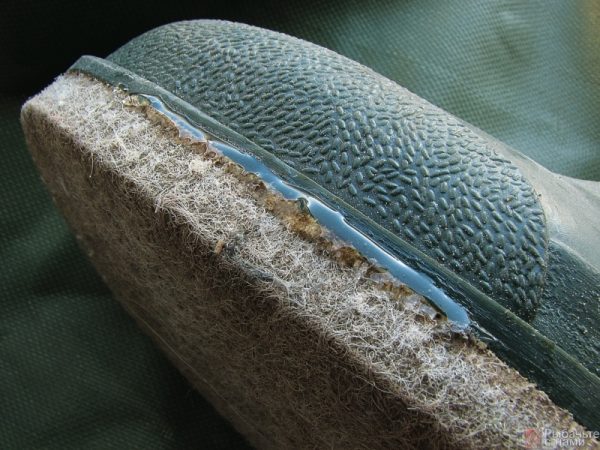
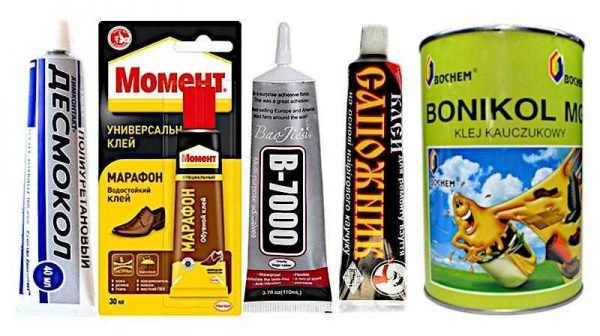
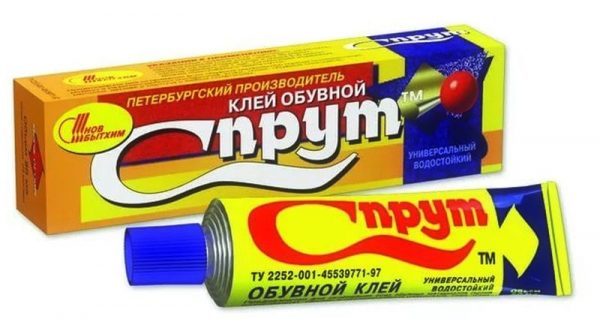
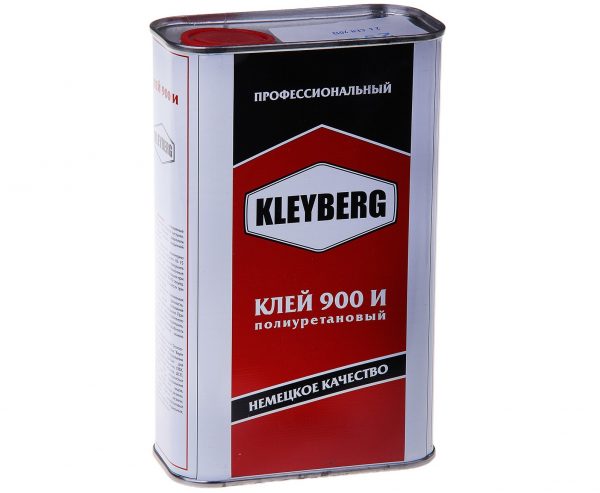
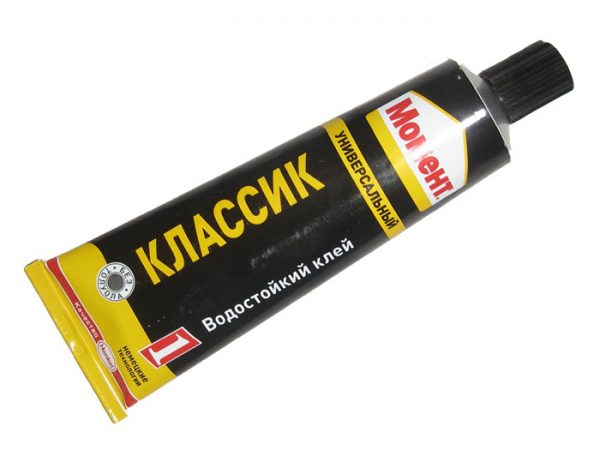
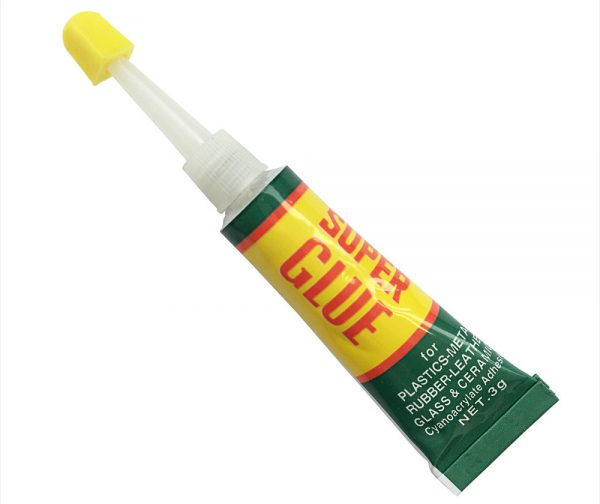
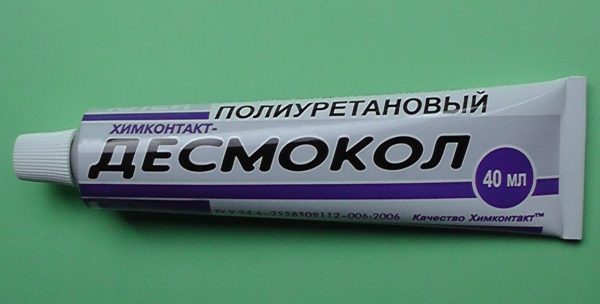
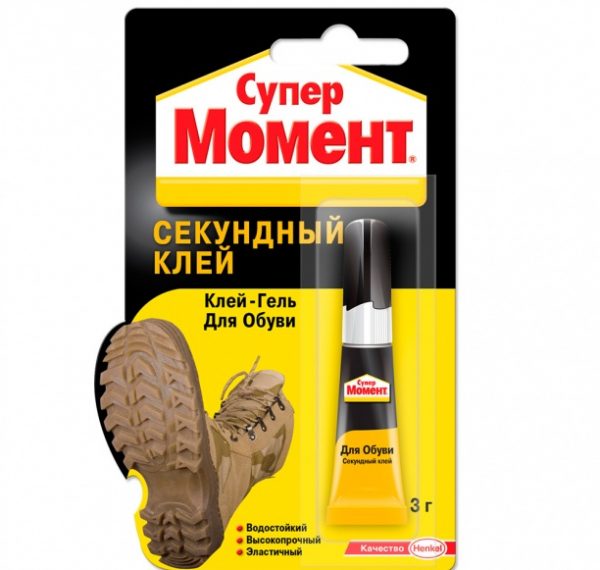
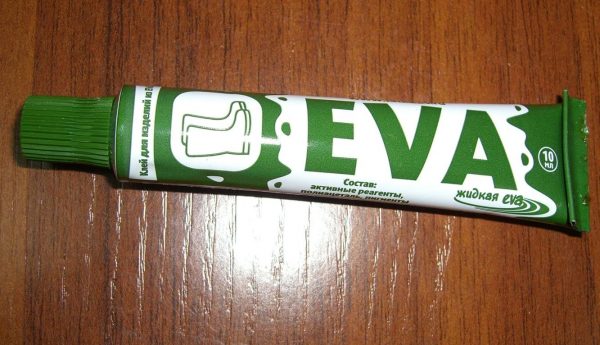
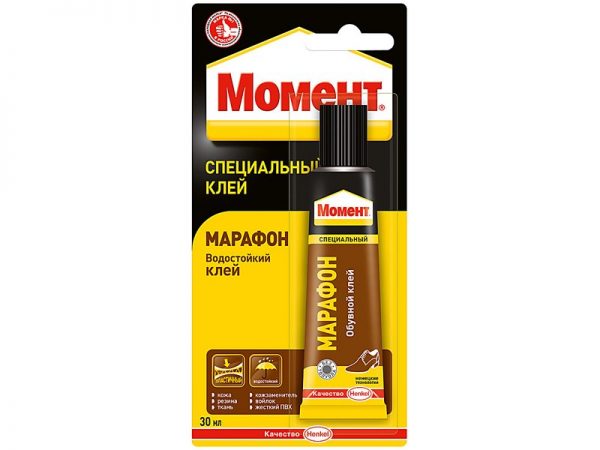
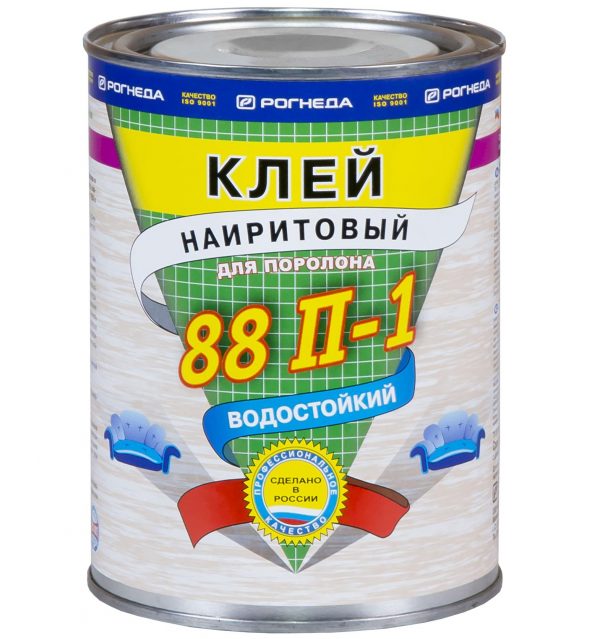
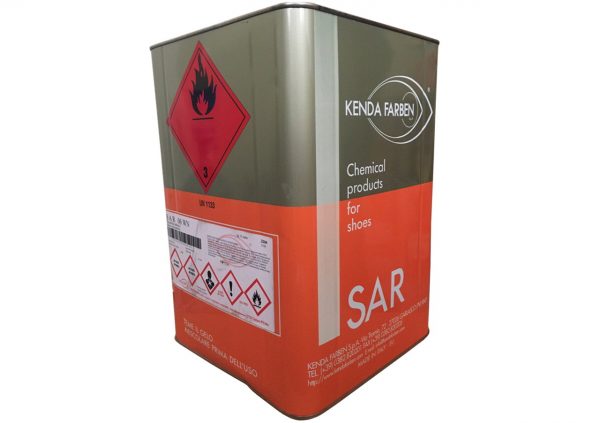
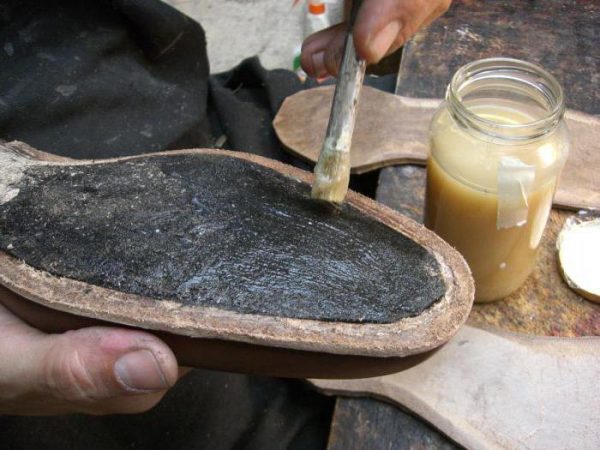
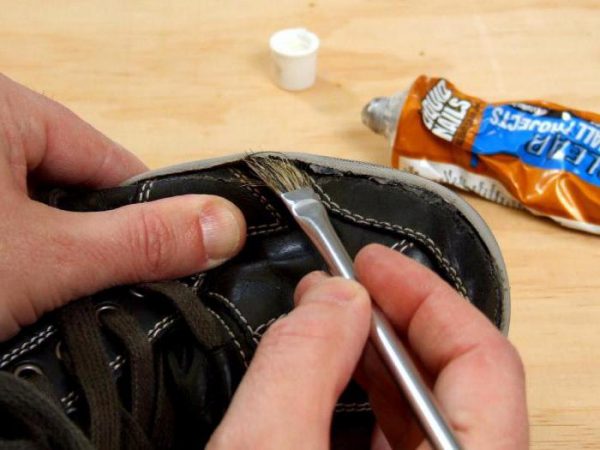


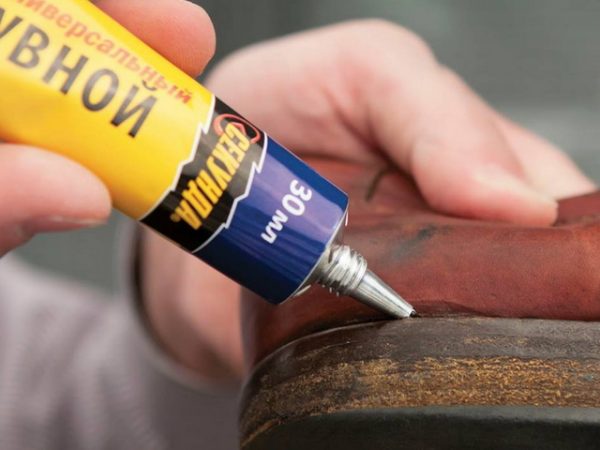

I didn’t even imagine that there is such a wide variety of glue for shoes. Always used a special moment glue, which glues very high quality.